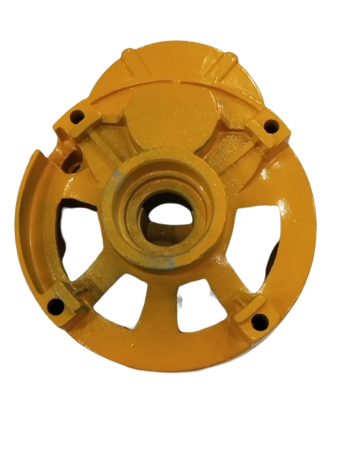The cut-off saw, a powerful tool for making precise cuts in various materials, relies on a multitude of components to function effectively. Among these, the seemingly simple cut-off saw screw plays a crucial role in ensuring accurate and safe operation. Here’s a breakdown of these essential fasteners:
Function:
-
Securing the Blade: The primary function of the cut-off saw screw is to securely fasten the cutting blade to the saw’s arbor (shaft). This ensures the blade remains firmly in place while rotating at high speeds, allowing for clean and controlled cuts.
-
Maintaining Alignment: A properly tightened screw prevents the blade from wobbling or shifting during operation. This wobble can lead to uneven cuts, inaccurate measurements, and even potential safety hazards.
Types of Cut-Off Saw Screws:
- Flange Screws: These are the most common type of cut-off saw screw. They typically have a flat head and a threaded shank that screws into the flange, which clamps the blade onto the arbor. Some flange screws might have a hex head for easier tightening with an Allen wrench.
- Arbor Nuts: In some cut-off saw models, particularly larger saws, an arbor nut might be used instead of flange screws. This nut threads onto the arbor and clamps the blade in place.
Materials:
- Cut-off saw screws are typically made from high-strength steel to withstand the forces generated during cutting operations. This ensures they maintain their grip on the blade even under heavy use.
Importance of Using the Correct Screw:
- It’s crucial to use the screw specifically designed for your cut-off saw model and blade size. Using an incorrect screw size or type can compromise safety and lead to:
- Improper Blade Attachment: The wrong screw might not provide a secure fit, potentially causing the blade to detach during operation.
- Stripped Threads: Using a screw that’s too small can damage the threads on the arbor or flange, rendering them unusable.
Replacement and Maintenance:
- Cut-off saw screws are generally not considered wear-and-tear items. However, they can become damaged over time, especially if overtightened or if the wrong size is used. It’s important to inspect the screws regularly for signs of damage, such as stripped threads or bending. If a screw is damaged, replace it promptly with the correct type and size for your saw model.
Safety Considerations:
- Always ensure the cut-off saw is unplugged before changing the blade or inspecting the screws.
- Tighten the screws firmly using the appropriate wrench or tool, but avoid overtightening, which can damage the screw or threads. Refer to your cut-off saw’s manual for specific torque recommendations.
In Conclusion:
The cut-off saw screw may seem like a minor detail, but it plays a vital role in the safe and efficient operation of your saw. By understanding the function, types, and importance of using the correct screw, you can ensure your cut-off saw delivers precise cuts and optimal performance for years to come. Remember, safety is paramount, so always follow proper procedures and consult your saw’s manual for specific screw replacement and maintenance instructions.












Reviews
There are no reviews yet.